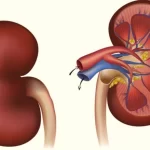Lotus pose (Padmasana)
‘Padma’ means lotus. When this seat is done, it looks like a lotus. That is why it has been named ‘Padmasan'(Lotus Pose). This seat is also known as Kamalasan. Padmasana (Lotus Pose) is the main posture for meditation and chanting. This asana is suitable for both men and women.
Top 10 benefits of lotus pose(padmasana)
This seat helps remove diseases such as asthma, insomnia, hysteria. For patients with insomnia, this seat is an unfailing source.
- Endocrine glands are made effective with this posture.
- This asana is also helpful in reducing body fatness. This posture increases the vitality of life.
- This seat is used for chanting, pranayama, perception, meditation, and samadhi.
- By doing Padmasan, menstrual disturbances are removed and the period becomes regular.
- The bladder and pelvis are also strengthened and also help to increase the fertility of women.
- Along with increasing blood circulation, this asana improves the digestive tract.
- Stress hormones are made in small quantities in the body by doing padmasan (Lotus Pose), due to which it helps in removing mental stress.
- The brain relaxes in the action of deep breathing in Padmasana (Lotus Pose) and the problem of not having sleep during the night is solved.
- Knees and joint bones are strengthened by doing Padmasana. Because of this, there is no problem with pain in the joints.
Also, Read- Veerasana (Hero Pose) steps, benefits, and precautions
How to do lotus pose (Padmasana)
- Sit straight by spreading both legs on the ground.
- Then place the right leg on the left foot and the left leg of the right leg.
- Many people first find the right foot on the right thigh and the right foot on the left thigh.
- This can also be done. According to the picture, Put the two fingers of thumb together with the constellations and put the left hand on the left foot and the right knee.
- Keep the spine and the head straight in the line. Keep your eyes closed or open.
- Many people can keep only one foot on the thigh.
- Such persons should also practice enthusiastically every day.
- In a short time, they will be able to easily do this posture. In the beginning, do this posture for one to two minutes and then gradually increase the time.
Some caution to Padmasana
- If your feet are hurt in the knees and you are feeling difficult to the knee, do not force them to turn it over.
- Do not do this posture if severe back and waist pain, injury to knees and ankles, or if you are a patient of sciatica.
- Pregnant women should also avoid doing Padmasana.
- If there is any difficulty, then under the supervision of a Yoga Teacher.





